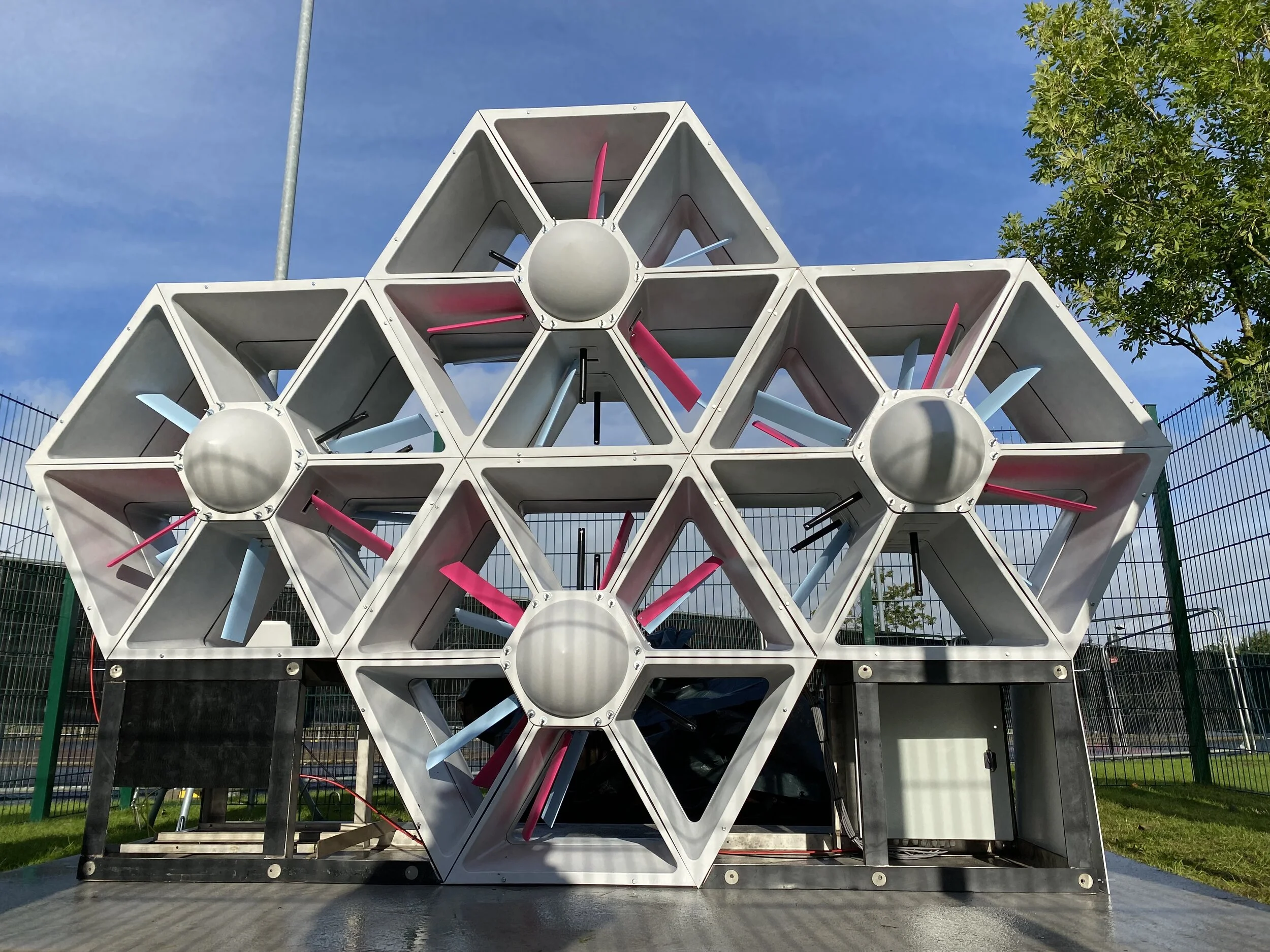Wind turbines have become a familiar sight on hillsides and coastlines across the world. But when it comes to urban environments, traditional turbines face a different set of challenges. Cities are full of tall buildings, uneven wind flows, and strict regulations around noise and vibration. Designing a wind energy system that can thrive in this environment has long been a tough engineering problem.
The Challenge of Urban Wind Energy
Traditional horizontal-axis wind turbines (HAWTs) are most efficient in open spaces where wind flows are laminar—smooth and directional. In contrast, city winds are turbulent and unpredictable, constantly changing direction due to nearby structures. Moreover, the rotating blades of conventional turbines create noise and vibration, making them unsuitable for dense urban areas.
To meet these challenges, engineers and innovators have experimented with vertical-axis turbines (VAWTs) and other unconventional systems. But few have shown the promise of Katrick Technologies’ new design—a system that eliminates blades altogether.
Introducing the Wind Panel
Katrick Technologies has unveiled its Wind Panel, a compact wind energy harvester built for urban and roadside use. Instead of spinning blades, the Wind Panel uses oscillating aerofoils—small airfoils that move back and forth within a duct. This fluttering motion captures the kinetic energy of air as it passes through, converting it into electricity.
Unlike turbines that rely on consistent wind direction, the Wind Panel reacts almost instantly to gusty, low-level winds, making it ideal for environments close to the ground or near buildings. Because the system operates within a duct, it’s also quiet, low-maintenance, and modular.
Why Fluttering Works Where Rotors Don’t
According to Katrick Technologies, rotational motion performs best above 10 metres—where airflow is smoother and more predictable. At those heights, wind speeds tend to be higher and more stable, allowing turbines to spin at constant speeds. But closer to the ground, winds are chaotic.
The oscillating design of the Wind Panel converts these irregular gusts into useful energy by capturing even small fluctuations in air pressure. This makes it an effective solution for urban microgeneration, where traditional turbines struggle to operate efficiently.
Design and Potential Applications
Each Wind Panel is hexagonal in shape, allowing multiple units to be arranged into a continuous wall or fence. This modular structure offers remarkable flexibility. Panels could be installed:
- Along highways, where passing vehicles generate strong airflow,
- Around airports, where they can act as both noise barriers and energy harvesters,
- Or even on building facades, turning walls into power-generating surfaces.
This dual functionality—producing energy while reducing noise—makes the technology particularly appealing for infrastructure projects where both sustainability and noise mitigation are priorities.
Performance and Energy Output
Katrick Technologies claims that a 10 kW Wind Panel array, operating at 25% capacity, can generate around 22,000 kWh per year—enough to power up to six average UK homes. While these numbers are promising, the company has yet to release detailed specifications such as panel dimensions, efficiency curves, or material composition.
As the technology matures, independent field testing will be essential to validate these performance figures—much like what has been done for emerging vertical-axis and omni-directional turbine systems.
Patented Aerofoil Technology
The Wind Panel’s fluttering aerofoil system has been granted a patent, protecting its novel method of capturing wind energy. Interestingly, the concept echoes the Volerian propulsion system, an earlier design that used oscillating aerofoils to generate thrust. Katrick’s approach inverts that idea—using the same fluttering motion not to move air, but to extract power from it.
Looking Ahead
Katrick Technologies’ Wind Panel represents an exciting step forward in the evolution of urban wind energy. By leveraging aeroelastic flutter instead of rotation, the company has opened the door to low-profile, noise-free, and scalable wind harvesting.
If the performance claims hold true, these panels could transform the way we think about distributed energy generation—turning city walls, noise barriers, and roadside infrastructure into silent power plants.
Conclusion
Urban wind energy has long been limited by physics, design, and practicality. Katrick’s Wind Panel may not only overcome these barriers but also introduce a new category of wind power: one that thrives in the very turbulence that once made cities unsuitable for turbines.
Would you like me to format it for a website post (with meta description, SEO tags, and image suggestions) — e.g., ready to upload to WordPress or Medium? That would make it search-friendly and visually structured.
